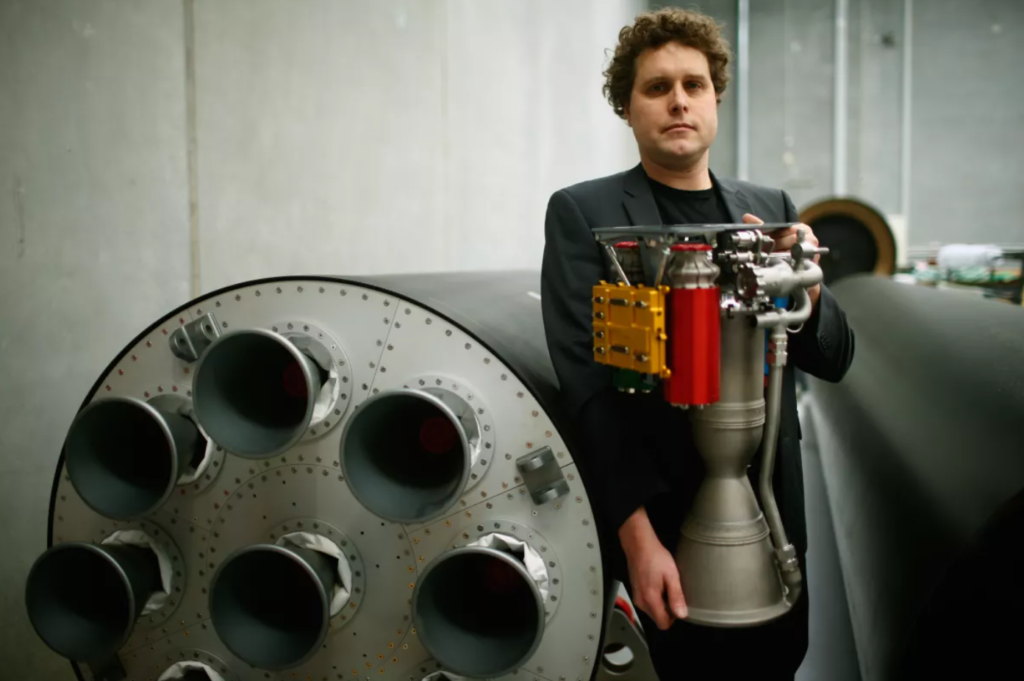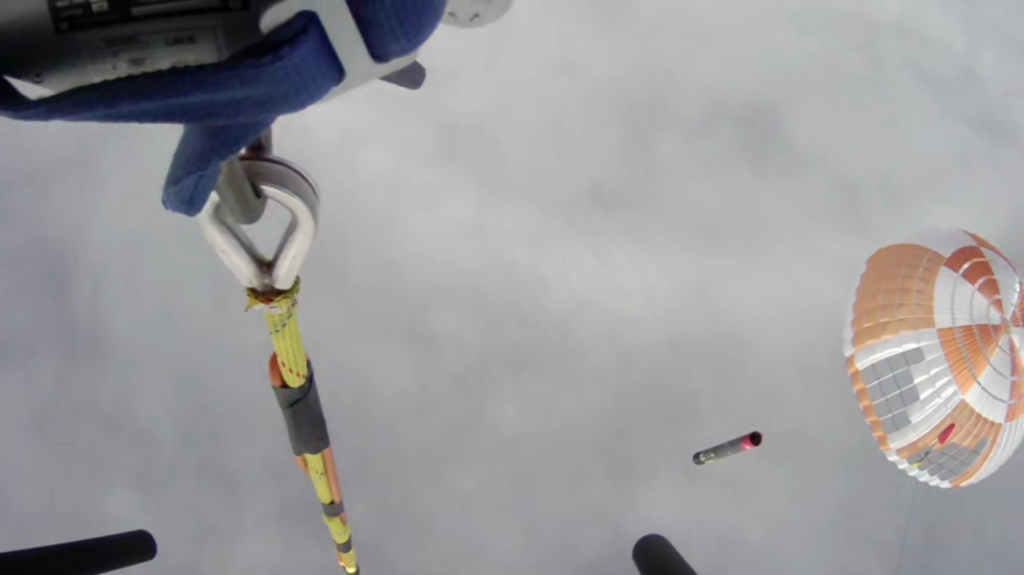
Rocket Lab Makes New Progress On Electron Recovery & Reuse
Over the past few years, we have watched Rocket Lab become a very significant launch provider within the space industry. The company’s small lift launch vehicle Electron has continued to prove itself even as Rocket Lab works to increase launch cadence and go on more ambitious missions. Not only this, but as of recently, the company has made even more progress on catching and reusing Electron’s booster.
Around four months ago we watched Rocket Lab’s first official attempt to catch Electron’s booster out of mid air after separating from the upper stage and falling back to Earth. The attempt was semi successful with the booster being initially caught before needing to be dropped due to an awkward catch angle. However, the company was still able to retrieve the booster in good condition and just gave updates on its future.
Specifically, over the past few days, Rocket Lab has been teasing another upcoming catch attempt of Electron’s first stage. This comes in addition to updates on one of the recovered Rutherford engines from the catch not long ago. Here I will go more in-depth into the recent news from Rocket Lab, the recovered engine, future catch attempts, and more.
Recent Updates

The updates began only two days ago on September 1st when Rocket Lab tweeted saying, “So when’s our next recovery mission, you ask? It’s on track to take place before the end of the year. And yes, we will be bringing back the helicopter.” The first helicopter recovery attempt was only a few months ago on May 2nd. Launched from Pad A at Rocket Lab Launch Complex 1 on New Zealand’s Mahia Peninsula, the “There And Back Again” mission was Rocket Lab’s 26th Electron launch. The mission deployed 34 satellites to a sun synchronous orbit for a variety of customers. What made this mission so special was the fact that for the first time, Rocket Lab caught Electron’s first stage as it returned from space under parachutes using a helicopter. The catch brought Electron one step closer to being the first reusable orbital small sat launcher. While even before this mission Rocket Lab had worked to recover the booster, this was the first time trying to catch it out of mid air.
As you can imagine, catching a returning rocket stage mid-air as it falls from space is a highly complex operation that demands extreme precision. Several critical milestones must align perfectly to ensure a successful capture. Taking a closer look at the mission profile highlights the complexity of the process. Here, at about two and a half minutes after lift-off, Electron’s first and second stages will separate per a standard mission profile. Electron’s second stage will continue on to orbit for payload deployment and Electron’s first stage will begin its descent back to Earth reaching speeds of almost 8,300 km per hour. The stage will reach temperatures of around 2,400 degrees C during its descent. After deploying a drogue parachute at 13 km altitude (about seven and a half minutes after lift-off), the main parachute will be extracted at around 6 km altitude to dramatically slow the stage to 10 meters per second, or 36 km per hour (about eight minutes and 12 seconds after lift-off). As the stage enters the capture zone, Rocket Lab’s helicopter attempts to rendezvous with the returning stage and capture the parachute line via a hook. In the case of the There And Back Again mission, the goal from here was to offload the captured first stage on a nearby recovery vessel before returning to land.
During the mission, Electron’s first stage undertook a series of complex maneuvres designed to enable it to survive the extreme heat and forces of atmospheric re-entry. Electron is equipped with a heat shield to help protect the stage’s nine Rutherford engines and a high quality parachute to slow Electron down in order for Rocket Lab’s customized S-92 helicopter to catch the stage as it returns. Once caught, they would then transport it back to Rocket Lab’s Production Complex for analysis. With Rocket Lab’s most recent update, we can expect to watch this process again in only a few months. Thanks to the recent practice and catch attempt not long ago we can hope for a fully successful recovery very soon.
Rutherford Engine Reuse

It’s important to point out that there is a lot more to rocket recovery than just catching and bringing the rocket back to Rocket Lab’s facility. Once at this stage, the company needs to refurbish and ensure the used booster and each of its components are 100% ready for its next launch. This was also somewhat of a new process for Rocket Lab after the There And Back Again mission. However, refurbishment seems to be going well after a tweet from Rocket Lab only a few days ago. Specifically, on September 1st, Rocket Lab also tweeted mentioning, “Recovered from the There And Back Again mission in May, this refurbished Rutherford completed 200 seconds of engine fire, multiple restarts, and produced full thrust of 21kN within 1000 milliseconds of ignition.” In addition, later that same day the company tweeted highlighting, “This engine has been to space and back. This week we proved it could go again. We’ve successfully test fired a recovered Rutherford engine for the first time – a significant technical milestone on our path to make Electron a reusable rocket!” This tweet included an almost 3 minute long video showcasing the Rutherford hot fire.
This was officially the first time Rocket Lab had ever test fired a reused Rutherford first stage engine. A significant technical achievement in the Company’s efforts to make its Electron rocket the world’s first reusable small-lift launch vehicle. Rocket Lab conducted the full duration, full-thrust test fire of the refurbished Rutherford engine earlier this week at the Company’s engine test facility. The engine was previously successfully launched to space and returned to Earth during Rocket Lab’s recent recovery mission, ‘There And Back Again’, launched on May 2, 2022. As partially mentioned prior, the mission was the first time Rocket Lab attempted a mid-air capture of Electron’s first stage, using parachutes on the rocket to slow its descent from space before a helicopter plucked the rocket from the sky as it approached Earth’s surface. The Electron stage was ultimately released for a soft ocean splashdown, before it was collected by vessel and returned to Rocket Lab’s production complex.
The refurbished Rutherford engine passed all of the same rigorous acceptance tests Rocket Lab performs for every engine, including 200 seconds of engine fire and multiple restarts. Data from the test fire shows the engine produced full thrust of 21kNs within 1000 milliseconds of ignition and performed to the same standard of a newly-built Rutherford engine. This Rutherford engine will now continue as an engine life-leader for future Rutherford development.
Rutherford is an electric pumped LOx/kerosene engine specifically designed for the Electron launch vehicle. The engine adopts an entirely new electric propulsion cycle, making use of brushless DC electric motors and high-performance lithium polymer batteries to drive its propellant pumps. This cuts down on much of the complex turbomachinery typically required for gas generator cycle engines, meaning that the Rutherford is simpler to build than a traditional engine but can achieve 90% efficiency. Rocket Lab also highlights that Rutherford is the first oxygen/hydrocarbon engine to use additive manufacturing for all primary components, including the regeneratively cooled thrust chamber, injector pumps, and main propellant valves. The Stage 1 and Stage 2 Rutherford engines are identical, with the exception of a larger expansion ratio nozzle for Stage 2 for improved performance in near-vacuum-conditions. Some of these features play an important role in the work being done to refurbish and reuse the engine.
Just two days ago Rocket Lab founder and CEO Peter Beck said: “We’ve always been at the forefront of innovation with Electron, having pushed the boundaries of many technologies including carbon composites, electric turbo-pumps, and 3D printed rocket engines. Now, we’re leading the pack once again bringing reusability to small launch vehicles. “Being able to refly Electron with minimal refurbishment is the ultimate goal, and so the fact that the recovered components on this engine performed on the test stand with minimal rework is further validation that we’re on the right path. If we can achieve this high level of performance from engine components recovered from the ocean, then I’m optimistic and incredibly excited about what we can do when we bring back dry engines under a helicopter next time.” This quote helps highlight that the company has had very promising success with a waterlogged engine. If the recovery was 100% successful this engine would never have come in contact with the ocean.
Conclusion
Rocket Lab has become a major launch provider thanks to the success of Electron, continued improvements, and ambitious ideas. The company just let us know that in only a few months from now we can expect to watch them try to catch Electron’s booster out of mid air once again. We will have to wait and see how it progresses and the impact it has on the space industry.
